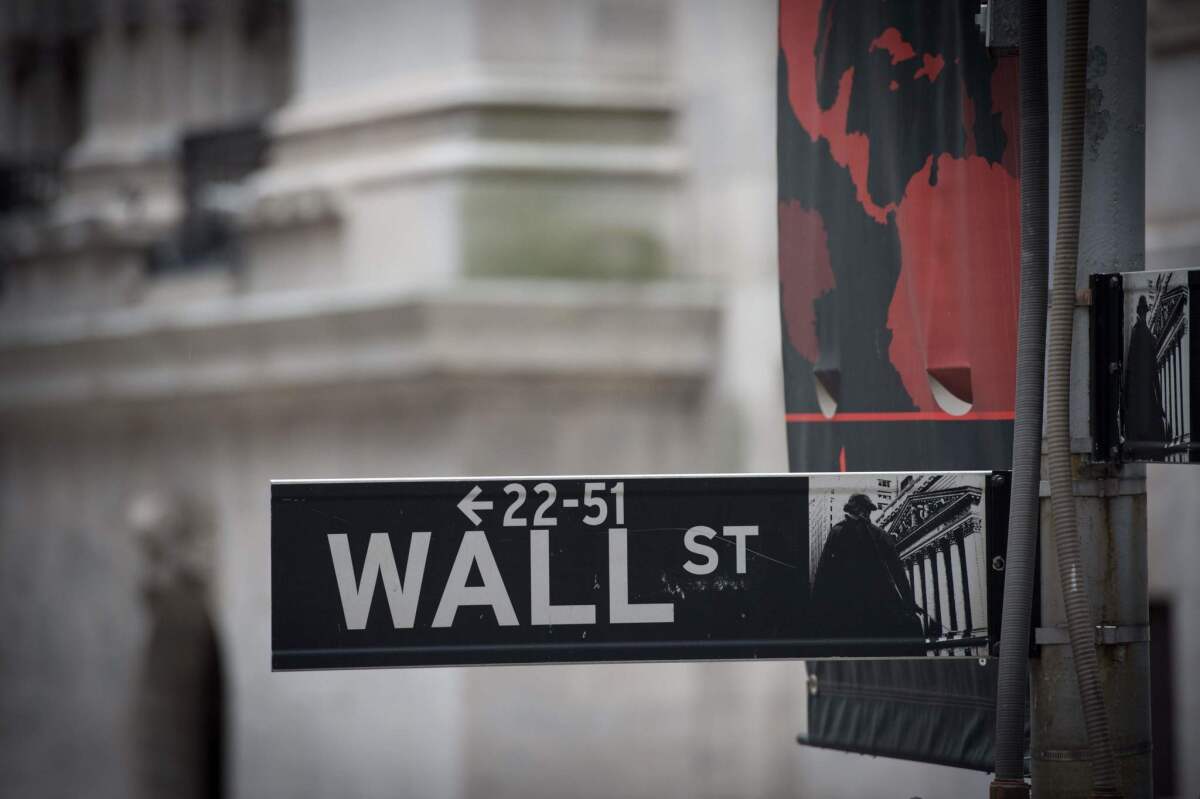Energy companies lead stocks mostly lower

Wall Street capped a week of milestones Friday with a day of listless trading that left U.S. stock indexes mostly lower.
Energy companies declined the most as the price of crude oil fell. Healthcare stocks posted the biggest gain.
Quarterly results from Microsoft, Starbucks and other big companies continued to be in focus. Bond yields fell after the government reported that the economy lost momentum in the last three months of 2016.
More stocks fell than rose on the New York Stock Exchange. This week all three major indexes set all-time highs, including the Dow Jones industrial average, which stayed above the 20,000 mark after crossing that threshold for the first time Wednesday.
“We’ve had an OK week,” said Jason Pride, director of investment strategy at Glenmede. “Having a day when you just give back a little bit is not a bad thing.”
The Dow edged down 7.13 points, or 0.04%, to 20,093.78. The Standard & Poor’s 500 index slipped 1.99 points, or 0.1%, to 2,294.69. The Nasdaq composite index inched up 5.61 points, or 0.1%, to 5,660.78. The tiny gain was enough to set another all-time high for the Nasdaq.
Small-company stocks did worse than the rest of the market. The Russell 2000 fell 4.89 points, or 0.4%, to 1,370.70.
The market drifted between small gains and losses through much of the day as investors weighed company earnings and new data on the U.S. economy.
The Commerce Department said the U.S. economy grew at an annual rate of just 1.9% in the last three months of 2016, a slowdown from 3.5% in the previous quarter. For 2016, the economy grew 1.6%, the worst showing since 2011 and down from 2.6% in 2015.
A separate government report showed that businesses spent more on industrial machinery, semiconductors and other big-ticket items last month, a sign that U.S. manufacturers seem to be doing better after a two-year slump.
The economic snapshots sent bond prices higher. The 10-year Treasury yield fell to 2.48% from Thursday’s 2.51%.
“The market right now is at sort of at a crossroads,” said Tom Siomades, head of Hartford Funds Investment Consulting Group. “We hit that huge psychological barrier and busted through it when we hit [Dow] 20,000, but today’s GDP number came in, for the most part, below expectations and brought everyone back down to earth.”
Companies that posted disappointing quarterly results or outlooks for 2017 helped steer the market lower.
Starbucks slid 4% to $56.12 a day after the coffee chain reported weak sales growth and cut its sales forecast for the year.
Chevron also turned in weaker-than-expected results. The San Ramon, Calif., oil company was the biggest decliner in the Dow, falling 2.4% to $113.79.
Colgate-Palmolive tumbled 5.2% to $64.68 after its fourth-quarter sales missed analysts’ estimates. The company’s 2017 forecast also disappointed investors.
Juniper Networks fell 3.8% to $26.67 after the Sunnyvale, Calif., maker of computer networking equipment reported a strong fourth quarter but projected a smaller-than-expected profit for this quarter.
Companies that served up better results got a boost.
Microsoft rose 2.4% to $65.78, making it the biggest gainer in the Dow. The software giant reported stronger-than-expected quarterly results, largely due to its focus on online services and business software rather than its legacy Windows operating system.
Wynn Resorts surged 8% to $103.08 after it reported revenue that beat Wall Street’s forecasts. The stock led all the gainers in the S&P 500.
So far, 33.8% of the companies in the S&P 500 index have reported quarterly results for the last three months of 2016, according to S&P Global Market Intelligence. And 40% of those have posted results that beat financial analysts’ forecasts, the firm said.
Investors also remained focused on the latest moves by President Trump. His spokesman said the administration was considering slapping a 20% tax on imports from Mexico to help pay for his promised border wall, in an announcement that left markets uncertain about what it means for trade.
“I don’t know anyone who would think of a trade war as good thing, or tariffs,” Siomades said. “When you start going down that path, then the market all of a sudden retracts and says, ‘Wait a minute, we have 1.9% GDP growth, how are higher tariffs and restriction on trade going to make that better?’ ”
Benchmark U.S. crude oil fell 61 cents, or 1.1%, to $53.17 a barrel in New York. Brent crude, used to price international oils, slid 72 cents, or 1.3%, to $55.52 a barrel in London.
Major stock indexes overseas were mixed.
Germany’s DAX fell 0.3%, while France’s CAC 40 slid 0.6%. Britain’s FTSE 100 gained 0.3%. In Asia, Japan’s benchmark Nikkei 225 index climbed 0.3%, helped by the dollar’s surge against the Japanese yen, while Hong Kong’s Hang Seng slipped 0.1%.
Many Asian countries have begun holidays of varying lengths, curtailing trading across much of the region. Markets in China, South Korea and Taiwan were closed, and Malaysia’s was open only in the morning.
In currency trading, the dollar strengthened to 115.09 yen from Thursday’s 114.42 yen. The euro rose to $1.0698 from $1.0692.
The price of gold slipped $1.40 to $1,188.40 an ounce. Silver rose 29 cents to $17.14 an ounce. Copper rose 2 cents to $2.70 a pound.
Wholesale gasoline dropped 2 cents to $1.53 a gallon, while heating oil fell 2 cents to $1.62 a gallon. Natural gas futures rose 1 cent to $3.39 per 1,000 cubic feet.
UPDATES:
2:35 p.m.: This article was updated with closing prices, context and analyst comments.
8:25 a.m.: This article was updated with more recent market information.
This article was originally published at 6:55 a.m.
More to Read
Inside the business of entertainment
The Wide Shot brings you news, analysis and insights on everything from streaming wars to production — and what it all means for the future.
You may occasionally receive promotional content from the Los Angeles Times.










